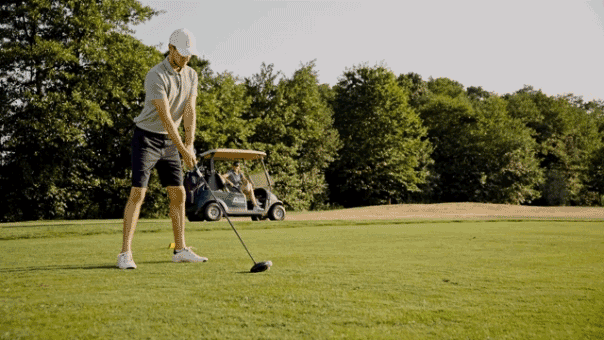Ken Felix has a lot of faith in people. He spent 40 years as a veterinarian, treating every size and type of animal from parakeets to hippopotamuses, and relished the freedom from lawyers and insurance companies that his medical-doctor friends couldn’t enjoy. Most of all, he liked his clientele.
“Physicians treat everybody— everybody gets sick,” Felix, 68, told FoxNews.com, but “[as veterinarians] we only see the people who care enough about their animals to bring in their animals, and they’re all nice people.”
Felix’s faith in humans was tested in May 2015, when he suffered a life-threatening bike crash in his hometown of Erie, Pennsylvania, that led doctors to detect then use video-assisted surgery to remove his stage 3 non-small cell lung cancer. Felix smoked as a teen but hadn’t taken a puff in nearly 40 years, and he hadn’t been presenting any symptoms of his cancer.
The father of two and grandfather of five doesn’t chalk up his post-treatment survival to karma, but he does think good fortune had something to do with it. So do his doctors.
“Unfortunately, for the majority of patients, when [lung cancer] is found curable, it’s found by luck,” Felix’s oncologist Nathan Pennell, director of the lung cancer medical oncology program at the Cleveland Clinic, told FoxNews.com. “By the time patients present with symptoms, such as pain and weight loss, it’s often spread and is not curable, so it was really lucky that we had picked this up.”
The bike accident left Felix with 12 fractures in eight ribs, a fractured shoulder blade, a concussion, and a flail chest, wherein a portion of the ribcage detaches from the chest wall, usually due to severe blunt trauma.
“I can’t tell you how many miles I’d ridden and never crashed,” said Felix, who at that time had indulged in 30-, 40- and 50-mile rides on the backroads of the Pennsylvania countryside. “I shouldn’t have bragged.”
A post-accident scan indicated a lesion on his left lung, which doctors eventually diagnosed as stage 3 non-small cell lung cancer, and treated with radiation, chemotherapy and surgery.
“It’s never safe to smoke for any amount of time, so anyone who’s smoked is at a higher risk [of lung cancer],” Pennell said. He added that after 15 years of quitting smoking, an individual’s chance of developing lung cancer drops to twice that of a never-smoker as opposed to about 20 times that of an active smoker. Ten to 15 percent of lung cancer patients have never smoked.
First operated on at UPMC Hamot in Erie, Felix had five titanium plates, with six to eight screws each, implanted on the left side of his chest. At the time of the crash, doctors at UPMC noticed the lesion but initially suspected inflammation due to the rib fractures. A month or so later, they performed a navigational bronchoscopy and took a biopsy to confirm it was inflammation, but the doctor asked Felix to return in another year so he could check on its status, he recalled.
Doctors did a PET scan and a CT scan, as well as a percutaneous biopsy, in which they stuck a needle in his chest, and test results indicated an EGFR mutation, which 40 percent of nonsmokers with lung cancer also have, Pennell said.
Through online research, Felix knew he had a 14 percent chance of surviving five years, but he didn’t waste any time feeling sorry for himself. He asked a cousin who practices oncology in Detroit for advice and received a referral to the Cleveland Clinic, where Pennell recommended two cycles of chemotherapy and five weeks of radiation followed by surgery.
The regimen eradicated nearly all of the cancer, so Felix underwent two additional weeks of radiation. As if luck had struck him again, Felix didn’t suffer common chemo side effects like nausea or vomiting.
“I am just lucky,” Felix said.
His surgeon Dr. Daniel Raymond, thoracic surgeon and chief quality officer for thoracic surgery at the Cleveland Clinic, said the subsequent operation took seven hours, or three times as long as video-assisted thoracoscopic surgery (VATS) typically does. During VATS, surgeons insert a small camera called a thoracoscope and surgical instruments through tiny incisions in the chest wall. The camera transmits images from inside the chest to a video monitor, which helps to guide the surgeon through the procedure.
Although VATS has been practiced since the early 90s, and one-third to one-half of all lung resections for cancer are done with VATS, Felix’s surgery was unique because of his prior injury, which made his ribs less compliant, and led to scarring in his chest from blood retention. Raymond and his team used a cardiopulmonary bypass machine as a backup and had vascular surgeons on hand during the operation to input stents in case Felix started bleeding.
“The challenge is that as the complexity gets higher, the chances of a successful video surgery is less,” Raymond told FoxNews.com. “We were working in a confined space, and his chest is what we’d call hostile— his lung was scarred to his chest wall, and it was a difficult operation.”
Typically during VATS, surgeons make one incision through which they place the camera and two others through which the instruments go. But because Felix’s ribs were noncompliant, his surgery was trickier, Raymond said.
“In [Felix’s] circumstance, the skin incision was the same, but we were going between multiple rib spaces because the ribs were so tight together [that] we could barely get one instrument between them,” he explained. “Typically, you can put two fingers through a working port incision. In his circumstance, we could not get a finger between the ribs. The ribs were essentially fixed in place due to his prior trauma surgery.”
The other challenge Raymond and his team faced was the cancer’s proximity to Felix’s blood vessels. To dissect the cancer, surgeons had to sacrifice the vagus nerve, which branches to the left vocal cord. Following surgery, Felix could not talk, but he underwent a vocal cord medialization procedure to temporarily correct the issue and begin speaking again. In December, he’ll undergo an additional procedure to permanently fix his vocal cords.
Because he was in good shape, Felix recovered within four days of his VATS procedure, surpassing Raymond’s expectation that he would need seven days to recover.
“His recovery was incredible,” Raymond said. “It is a testament to the fact of what happens when you are in great shape. In addition to his physical condition, it’s his mental condition. He is one of those people who has an indomitable spirit, and things can never get him down.”
Although 40 to 50 percent of patients with stage 3 lung cancer will be cured with the aggressive treatment regimen that Felix received, only 15 to 20 percent of people with Felix’s non-small cell lung cancer are cured with it.
But Pennell thinks Felix’s physical health may put him at an advantage.
“For people who are healthy enough, and whose cancer is limited enough, and can go through these three types of treatment, the outcomes tend to be better,” Pennell said.
Felix said he feels “great” and is proud that he weighs the same today as he weighed when he had his bicycle accident. He credits surviving the crash— and the surprise cancer— to his commitment to fitness and eating healthy, as well as his good genetics. He also credited the people on his support team, including his wife Jan and doctors, and his positivity.
“And then there’s a thing called luck,” Felix said.







































